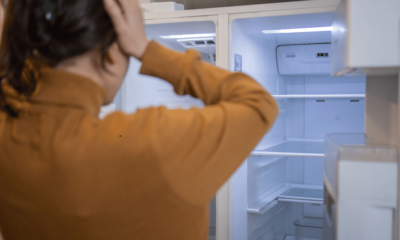Food & Drinks
Inside the Beyond Meat Collapse: How a Billionaire-Backed Food Giant Lost 99% of Its Value
The Beyond Meat collapse has become one of the most dramatic and unexpected downturns in modern food-tech history. Once celebrated as the future of meat alternatives and backed by influential investors, Beyond Meat surged from a niche food startup to a global phenomenon.
Yet within just a few years, the company lost over 99% of its market capitalisation, stunning investors and shaking confidence in the wider alternative-protein industry. For Australians—who quickly embraced meat substitutes—the Beyond Meat collapse reveals deeper truths about consumer behaviour, pricing expectations, and the challenges of scaling novel food technologies.
This is the full story behind the rise and fall.
Why the Beyond Meat Collapse Happened
The Beyond Meat collapse was driven by declining consumer demand, falling retail sales, high production costs, international overexpansion, and mounting debt. Despite early backing from Bill Gates, Kleiner Perkins, Tyson Foods, and Leonardo DiCaprio, the company was unable to maintain momentum or profitability.

How Beyond Meat Became a Global Powerhouse
Before the collapse, Beyond Meat was one of the fastest-growing food brands in the world. Its mission was bold: replicate meat using plants, science, and sustainable innovation.
Powerful Early Investors
Beyond Meat drew attention from major investors, including:
- Bill Gates, a prominent supporter of food-tech
- Kleiner Perkins, Silicon Valley venture capital leaders
- Tyson Foods, one of the world’s biggest meat producers
- Leonardo DiCaprio, adding sustainability-focused visibility
AgFunderNews noted Gates’ early involvement, while CB Insights reported Kleiner Perkins held nearly 16% at IPO. Tyson Foods’ pre-IPO stake added corporate legitimacy to Beyond Meat’s early ambitions.
Perfect Timing for the Product
During the late 2010s, global interest in sustainable eating surged. Australians, known for embracing food innovations early, responded quickly. Supermarkets expanded plant-derived protein selections and fast-food chains introduced meat-free options to meet rising demand.
Fast-Food Partnerships Fueled the Buzz
Beyond Meat gained global exposure through partnerships with:
- McDonald’s
- KFC
- Pizza Hut
- Subway
These collaborations made Beyond Meat appear unstoppable. For a moment, it looked like traditional meat could face genuine disruption.
The Downturn: How the Beyond Meat Collapse Unfolded
Despite strong beginnings, the Beyond Meat collapse was driven by multiple forces converging at once.
1. Consumer Enthusiasm Declined
Early curiosity created strong trial purchases, but repeat buying slowed sharply. Nasdaq’s analysis showed global sales flattening after 2021.
Common consumer concerns included:
- High pricing relative to real meat
- Perception of being overly processed
- Long, unfamiliar ingredient lists
- Limited flavour improvements
In Australia, buyers shifted toward simpler alternatives such as mushroom-based or whole-food proteins.
2. Revenue Declines Became Persistent
The latest financial results revealed deepening challenges for the company. Revenue fell by more than 13% year-on-year, while product volumes dropped over 10%, indicating weakening demand across key markets. The quarter closed with losses exceeding $110 million, a sharp deterioration compared to the previous year. These were not short-term setbacks—they signalled structural issues in consumer interest, pricing competitiveness, and overall market sustainability.
3. High Costs Damaged Profitability
Producing a meat analogue at scale is expensive. Beyond Meat faced rising costs across:
- Pea and vegetable proteins
- Manufacturing
- Refrigerated logistics
- Marketing
- Supply chain operations
Inflation accelerated these pressures, squeezing margins.
4. Overexpansion Across International Markets
Beyond Meat expanded aggressively across Australia, Asia, and Europe. Consumer tastes varied, competition increased, and pricing sensitivity became a barrier.
In Australia, Beyond Meat was challenged by:
- Local brands like v2food and Fable
- Private label supermarket options
- A shift toward cleaner ingredient profiles
The broad expansion strategy outpaced demand.
5. Debt and Share Dilution Triggered Panic
To manage declining revenue, Beyond Meat increased its debt load. Later, a convertible debt exchange caused major shareholder dilution, signalling financial distress.
This was a turning point in the Beyond Meat collapse, accelerating its 99% market value decline.
Investor Retreat During the Beyond Meat Collapse
As performance declined, early high-profile investors distanced themselves:
- Tyson Foods exited before Beyond Meat’s IPO
- Institutional investors reduced exposure
- Celebrity investors remained silent
- Sustainability funds diversified into next-generation proteins
The Beyond Meat collapse highlighted that even billionaire backing cannot sustain a company without strong fundamentals.
What the Beyond Meat Collapse Means for Australia
Australia remains a strong market for sustainable protein products, but preferences have shifted.
Key Observations from the Collapse
- Australian consumers increasingly prefer simpler, less processed foods.
- Local brands offering cleaner ingredient profiles gained traction.
- Whole-food alternatives and mushroom-based products grew faster than engineered meat analogues.
- Pricing remains a major decision factor, especially with rising living costs.
The Beyond Meat collapse marks a turning point in how alternative protein companies must approach product development and market positioning.
FAQs
What caused the Beyond Meat collapse?
The Beyond Meat collapse was caused by declining demand, reduced repeat purchases, high costs, international overexpansion, and heavy debt leading to shareholder dilution.
Who invested in Beyond Meat early on?
Bill Gates, Kleiner Perkins, Tyson Foods, and Leonardo DiCaprio were among the most notable early investors.
Is there still demand for alternative protein in Australia?
Yes, but shoppers increasingly choose cleaner, less processed, and better-priced protein options.
Hi, I’m Ankush. Based in Port Lincoln, South Australia, I hold a Bachelor of Science and a Bachelor of Education (Middle & Secondary) from the University of South Australia, graduating in 2008. With several years of experience as a high school and secondary teacher, I’ve combined my passion for technology and finance to drive innovation in the on-demand service industry. As the founder of Orderoo, I’m committed to leveraging technology to simplify everyday tasks and enhance accessibility to essential services across Australia. My focus remains on exploring new opportunities to expand and improve these solutions, ensuring they meet the evolving needs of users and service providers alike.




























